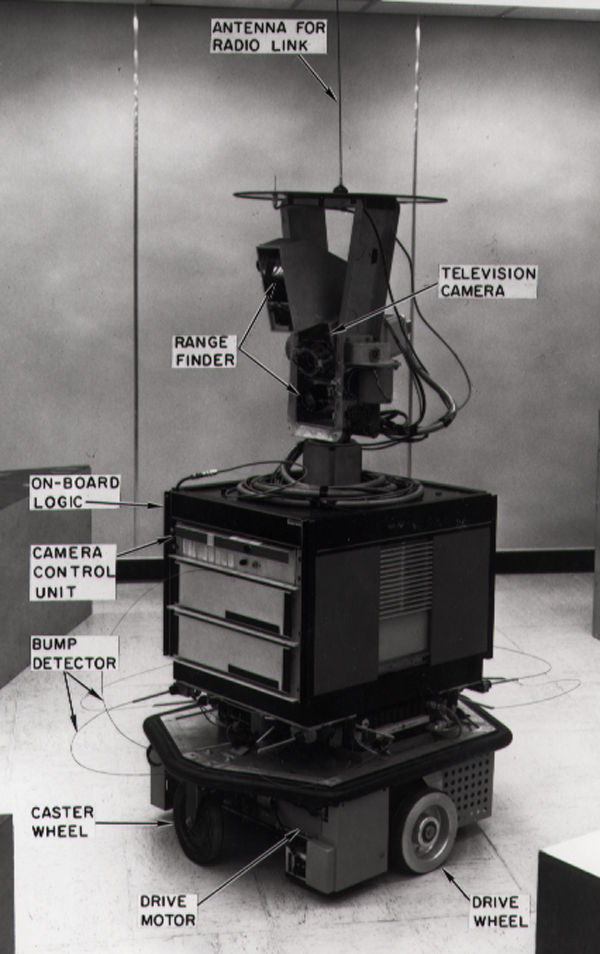|
Jump Point Search
In computer science, jump point search (JPS) is an optimization to the A* search algorithm for uniform-cost grids. It reduces symmetries in the search procedure by means of graph pruning, eliminating certain nodes in the grid based on assumptions that can be made about the current node's neighbors, as long as certain conditions relating to the grid are satisfied. As a result, the algorithm can consider long "jumps" along straight (horizontal, vertical and diagonal) lines in the grid, rather than the small steps from one grid position to the next that ordinary A* considers. Jump point search preserves A*'s optimality, while potentially reducing its running time by an order of magnitude. History Harabor and Grastien's original publication provides algorithms for neighbor pruning and identifying successors. The original algorithm for neighbor pruning allowed corner-cutting to occur, which meant the algorithm could only be used for moving agents with zero width, limiting its applica ... [...More Info...] [...Related Items...] OR: [Wikipedia] [Google] [Baidu] [Amazon] |
Computer Science
Computer science is the study of computation, information, and automation. Computer science spans Theoretical computer science, theoretical disciplines (such as algorithms, theory of computation, and information theory) to Applied science, applied disciplines (including the design and implementation of Computer architecture, hardware and Software engineering, software). Algorithms and data structures are central to computer science. The theory of computation concerns abstract models of computation and general classes of computational problem, problems that can be solved using them. The fields of cryptography and computer security involve studying the means for secure communication and preventing security vulnerabilities. Computer graphics (computer science), Computer graphics and computational geometry address the generation of images. Programming language theory considers different ways to describe computational processes, and database theory concerns the management of re ... [...More Info...] [...Related Items...] OR: [Wikipedia] [Google] [Baidu] [Amazon] |
A* Search Algorithm
A* (pronounced "A-star") is a graph traversal and pathfinding algorithm that is used in many fields of computer science due to its completeness, optimality, and optimal efficiency. Given a weighted graph, a source node and a goal node, the algorithm finds the shortest path (with respect to the given weights) from source to goal. One major practical drawback is its O(b^d) space complexity where is the depth of the shallowest solution (the length of the shortest path from the source node to any given goal node) and is the branching factor (the maximum number of successors for any given state), as it stores all generated nodes in memory. Thus, in practical travel-routing systems, it is generally outperformed by algorithms that can pre-process the graph to attain better performance, as well as by memory-bounded approaches; however, A* is still the best solution in many cases. Peter Hart, Nils Nilsson and Bertram Raphael of Stanford Research Institute (now SRI International) ... [...More Info...] [...Related Items...] OR: [Wikipedia] [Google] [Baidu] [Amazon] |
Online Algorithm
In computer science, an online algorithm is one that can process its input piece-by-piece in a serial fashion, i.e., in the order that the input is fed to the algorithm, without having the entire input available from the start. In contrast, an offline algorithm is given the whole problem data from the beginning and is required to output an answer which solves the problem at hand. In operations research Operations research () (U.S. Air Force Specialty Code: Operations Analysis), often shortened to the initialism OR, is a branch of applied mathematics that deals with the development and application of analytical methods to improve management and ..., the area in which online algorithms are developed is called online optimization. As an example, consider the sorting algorithms selection sort and insertion sort: selection sort repeatedly selects the minimum element from the unsorted remainder and places it at the front, which requires access to the entire input; it is thus a ... [...More Info...] [...Related Items...] OR: [Wikipedia] [Google] [Baidu] [Amazon] |
Game Artificial Intelligence
In video games, artificial intelligence (AI) is used to generate responsive, adaptive or intelligent behaviors primarily in non-playable characters (NPCs) similar to human-like intelligence. Artificial intelligence has been an integral part of video games since their inception in 1948, first seen in the game ''Nim''. AI in video games is a distinct subfield and differs from academic AI. It serves to improve the game-player experience rather than machine learning or decision making. During the golden age of arcade video games the idea of AI opponents was largely popularized in the form of graduated difficulty levels, distinct movement patterns, and in-game events dependent on the player's input. Modern games often implement existing techniques such as pathfinding and decision trees to guide the actions of NPCs. AI is often used in mechanisms which are not immediately visible to the user, such as data mining and procedural-content generation. One of the most infamous examples ... [...More Info...] [...Related Items...] OR: [Wikipedia] [Google] [Baidu] [Amazon] |
Graph Algorithms
An algorithm is fundamentally a set of rules or defined procedures that is typically designed and used to solve a specific problem or a broad set of problems. Broadly, algorithms define process(es), sets of rules, or methodologies that are to be followed in calculations, data processing, data mining, pattern recognition, automated reasoning or other problem-solving operations. With the increasing automation of services, more and more decisions are being made by algorithms. Some general examples are; risk assessments, anticipatory policing, and pattern recognition technology. The following is a list of well-known algorithms. Automated planning Combinatorial algorithms General combinatorial algorithms * Brent's algorithm: finds a cycle in function value iterations using only two iterators * Floyd's cycle-finding algorithm: finds a cycle in function value iterations * Gale–Shapley algorithm: solves the stable matching problem * Pseudorandom number generators (uniformly dist ... [...More Info...] [...Related Items...] OR: [Wikipedia] [Google] [Baidu] [Amazon] |

